It’s a nightmare all of us occasionally have. As the plane taxies down the runway, as it starts to lift off into the air, as the ground drops further and further away… the faint, unstoppable fear that the next thing you feel might be gravity grabbing hold and dragging you down to a fiery grave. That’s the reason horrific air disasters tend to stick in our minds. It’s all too easy to imagine how those poor people on the Hindenburg, or on Pan Am Flight 103 over Lockerbie, or in the planes in the Tenerife Airport disaster must have felt.
Yet not all accidents are born equal. For every United Flight 93, or MH17 shot down over eastern Ukraine, there are scores of equally disturbing disasters that have been forgotten. You’ve probably heard all about the New York mid-air collision in 1960, or the Germanwings suicide-crash in 2015. But we’re guessing you’re less aware of the following…
10. The R101 Airship Disaster (1930)
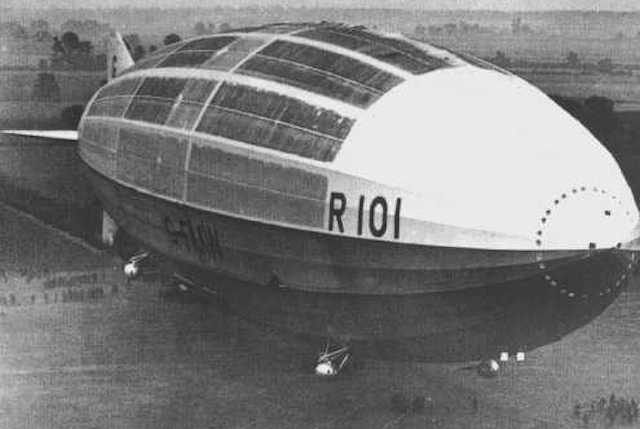
When the Hindenburg went up in a flash of flames, you could hear the sound of airship stocks across the planet plummeting in value. But the Hindenburg is far from the only deadly disaster in airship history. Just seven years earlier, the experimental British airship R101 crashed into a field in Northern France. The impact caused the whole thing to burst into flames, killing 48 of the 54 people onboard.
The stupidest thing about the R101 disaster is how preventable it was. The airship had come in heavier than its design intended it to be, so a safety mechanism designed to avoid dangerous gas leaks was chucked to make it lighter. On top of that, it was an experimental craft on its maiden voyage, yet the dude in charge of the Air Ministry, Lord Thompson, decided that the voyage should be to India. He further insisted it take off during a storm, and while loaded down with heavy crates of silverware he’d inexplicably insisted on bringing. R101 took off, untested, overfilled, and heading for a storm. You can guess how that went.
R101 hit the ground and exploded just after crossing the Channel. Lord Thompson was among the dead. The disaster killed the entire British airship program.
9. The USS Akron Airship Disaster (1933)
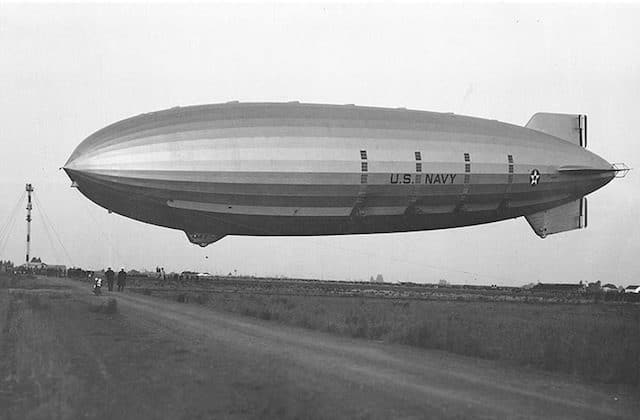
If the R101 disaster was worse than the Hindenburg, the crash of the airship USS Akron was even worse than that. No other airship disaster in history has left so many people dead. Sadly, like the R101 crash, it was also completely preventable.
The USS Akron was owned by the Navy, and, as such, frequently flown above the ocean. Yet nobody had ever thought to install lifejackets or rafts or anything that might be useful if the airship ever plunged into the water. Which is exactly what it did on April 4, 1933. Captain Frank McCord was flying way too low, and abruptly decided to pull his airship upwards. As the nose raised, the tail sank, until it clipped the waves and the whole ship and its 76 passengers were pulled into the roiling, freezing ocean.
In this case, there was no dramatic explosion. No great ball of fire. Just an airship that sank beneath the waves, drowning 73. During the rescue operation, another two lives would be lost. Remarkably, the crash didn’t end America’s airship program. It was only shut down two years later after the Akron’s sister airship also crashed into the sea.
8. The Freckleton Air Disaster (1944)

Some disasters aren’t forgotten so much as they are barely noticed in the first place. The Freckleton Air Disaster had the misfortune to take place in August 1944, just when the Liberation of Paris was underway. Compared to the nearly 5,000 who died in the French capital, the deaths of 61 people in the tiny northern English village of Freckleton didn’t warrant much press attention. Yet it was so horrific that, had it happened at any other time, it would’ve received wall-to-wall coverage.
The cause was sheer bad luck. An American bomber got lost in a freak storm over the Irish Sea and accidentally wound up over Lancashire. As the storm reached a crescendo, pilot John Bloemendal lost control and clipped a tree with his wing. The plane split in two over Freckleton. One part smashed through three houses and a bar catering to American and British servicemen. The other thudded into the village school and burst into flames.
The impact on the bar killed 14, mostly American servicemen. At the school, the sea of fire consumed 38 children and six teachers. All three crewmen on the plane died on impact.
7. Santa Ana Airshow Crash (1938)

Few air crashes came as close to screwing up a country’s entire future as that at Santa Ana airshow. Taking place near the center of Bogota, it was meant to show off the skills of Colombia’s new breed of daredevil fighter pilots. As a stand full of diplomats and a stand filled with government figures watched, pilot César Abadia attempted a low-altitude dive between the two. He got his timing badly wrong.
Abadia’s wing clipped the stand full of government figures, causing the roof to collapse. The plane itself went into a spin, hit the ground, then plowed at high speed into a crowd of civilians before exploding in a ball of fire. By the time the dust had settled and the flames been put out, 45 were dead and 200 injured. Another seven would later die of their injuries.
Bad as this was, it could have been worse. The government stand had contained both outgoing Colombian President Alfonso López Pumarejo, and incoming President Eduardo Santos. Future President Misael Pastrana Borrero was also there. Had the plane hit the government stand slightly harder, modern Colombian history would’ve been rewritten.
6. Japan Airlines Flight 123 (1985)

The crash of Japan Airlines Flight 123 killed a lot of people. How many? So many that in aviation history only the infamous Tenerife Airport Disaster of 1977 (when two planes crashed and burst into flames) has killed more. 520 people died when the passenger plane slammed into Mt. Takamagahara outside Tokyo. Incredibly, it could have been worse. Somehow, four people managed to survive hitting a mountain at over 200 mph.
The crash took place in the middle of a busy holiday period. Nearly everyone onboard was flying home, or heading off to meet family. Among the dead were 11 children, the first Japanese singer to have a number one on the American charts, and at least 21 foreign visitors.
Unfortunately for those involved, this was simply one of those cases where no single person is at fault. The rear door exploded off mid-flight, and the pilot completely lost control of the plane. He attempted to turn it around for an emergency landing and instead clipped a mountain with the wing, forcing the plane into a deadly tailspin.
5. Stockport Air Disaster (1967)
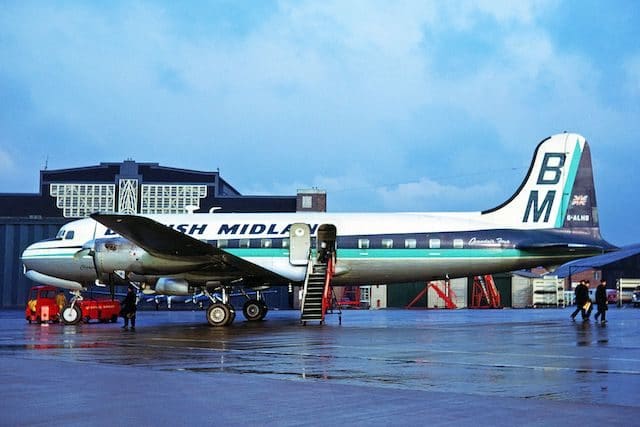
There’s obviously never a good time to be involved in a traumatizing air crash, but while returning from a dream vacation seems particularly cruel. In 1967, a British Midland flight was returning from Majorca, Spain when it abruptly lost power over Manchester. The plane plunged into a residential area. People on the ground reported that it went so low over houses that they could see vacationers inside, banging helplessly on the windows, their faces contorted in silent screams. Seconds later the airplane slammed into a garage and exploded.
Miraculously, no one on the ground was injured. The captain was later praised for steering the plane away from people’s homes, thus averting a much higher death toll. But for those onboard, there was little to be grateful for. 84 souls had boarded the plane in Majorca. Only 12 were still alive after the crash. 77 were burned beyond all recognition.
Perhaps the worst part is how close the plane was to landing. At the time the power went out, the airport was only six miles away. Talk about bad timing.
4. Mt. Erebus Disaster (1979)
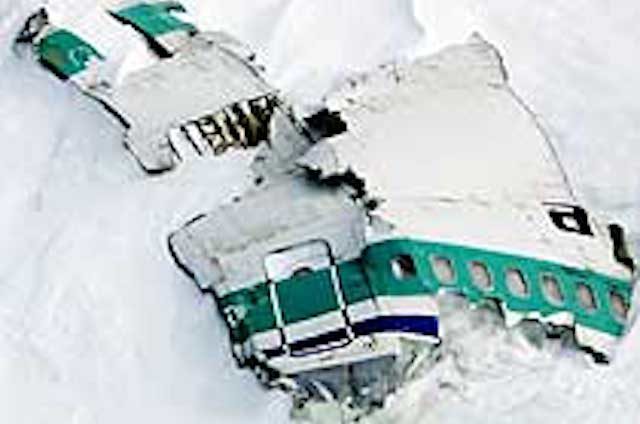
If you absolutely must be involved in a plane crash, you ideally want it to take place somewhere with both a soft landing and nearby emergency response teams. An open-air pillow factory beside an award-winning trauma hospital, say. Where you really don’t want it to happen is on Mt. Erebus. An active volcano in the empty wastes of Antarctica, it’s not the sort of place help can easily get to, as those on Air New Zealand Flight 901 sadly found out.
A sightseeing flight, ANZ 901 regularly left New Zealand to fly over Antarctica before returning the same evening. However, on this particular day, Air New Zealand had changed the route without telling the crew, entering new coordinates. The crew thought they were going to fly into McMurdo Sound. Instead they found themselves in the path of a mountain.
The crash killed all 257 onboard. It was the retrieval operation that really proved difficult. A small team of New Zealand policemen were sent out to identify bodies in howling winds, subzero temperatures and surrounded by death and destruction on an epic scale. 34 bodies were never recovered, and being forced to live in the disaster site for two weeks gave at least one policeman a nervous breakdown.
3. Avianca Cartel Bombing (1989)
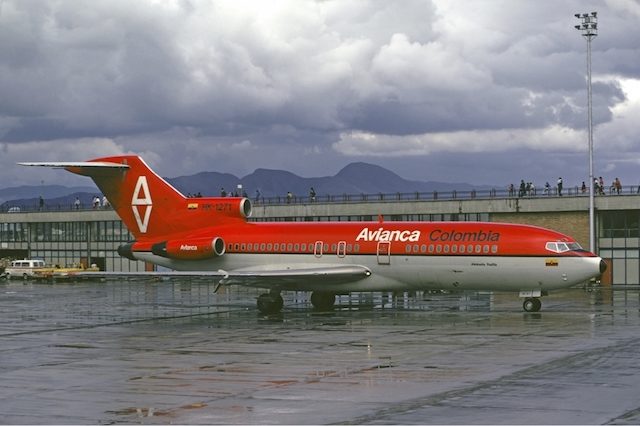
Of course, not every flight that crashes is brought down by accident. Some are deliberately knocked out the sky by people we’re politely going to refer to as fart-holes. And Pablo Escobar was probably the biggest fart-hole of them all. In 1989, the powerful leader of the terrifying Medellin Cartel decided he wanted a Colombian presidential candidate killed. Rather than blow up his car or gun him down in the street, he decided to target the plane he was going to be flying on. Avianca Flight 203 had just left Bogota when Escobar’s goons detonated a bomb onboard. 107 people died instantly.
This would all be bad enough anyway, but the real kicker came when investigators looked into the flight list. Escobar’s target, Cesar Gaviria, hadn’t even been onboard. He’d changed his plans at the last second. The Medellin Cartel had just killed over 100 people and blasted flaming wreckage across the mountains outside Bogota for nothing.
Fittingly, Gaviria went on the win the election and declare war on the Colombian cartels. It was under his watch that Escobar was gunned down on a Medellin rooftop, justice finally served.
2. Superga Air Disaster (1949)

The late 2016 air crash of a Colombian plane carrying Brazil’s beloved Chapecoense soccer team was one of the most traumatic incidents in soccer history. But it wasn’t the first or only time an entire team has been wiped out this way. Arguably, the Superga Air Disaster was even worse. On May 4, 1949, a plane carrying Italy’s legendary Il Grande Torino team back from a game in Lisbon came in too low on its approach to Turin. The weather was foul, and the pilot – a decorated WWII flying ace – got lost in low-lying cloud. By the time the mist cleared, they were about half a second away from impact. There wasn’t even time to scream.
The plane hit a basilica and immediately exploded. 31 lives were instantly snuffed out, including the entire Grande Torino squad. This was a team that had almost invented modern soccer, bringing not just the 4-2-4 formation to the world, but also some of the era’s greatest players. They’d been on the verge of winning the Italian league for the fifth year in a row, and their spirit and sportsmanship was seen as a necessary tonic for Italy following the bitterness of WWII. The Superga Air Disaster wiped all that out. Italy was plunged into mourning. Over half a million people came to watch the club’s funeral procession.
1. Iran Air Flight 655 (1988)

Most Brits and Americans remember the Lockerbie bombing, when a terrorist attack knocked Pan Am Flight 103 out of the air over Scotland, sending its flaming wreckage crashing down onto the town of Lockerbie below. Yet few have ever heard of Iran Air Flight 655. This is all the more strange, as there’s an argument that the two are intimately connected.
First, the Iran Air crash. On July 3, 1988, a civilian plane took off from Bandar Abbas, an Iranian airport used by both commercial and military planes. This was in the middle of the Iran-Iraq War that killed around a million and drew in the United States. At the time, the US had warships in the area to protect oil tankers. When Flight 655 took off, those onboard the USS Vincennes assumed it was an incoming F-14. They sent up two missiles and blasted it out of the sky. All 290 people onboard died.
Here’s where the Lockerbie connection comes in. The Iranians were traumatized by the blowing up of IA Flight 655. The Ayatollah claimed the skies would rain with Western blood. To this day, significant sections of the CIA believe Pan Am Flight 103 was destroyed in a revenge attack by Iran, and the Libya connection was merely a smokescreen. Conspiracy? Truth? We’ll leave it to you to decide.